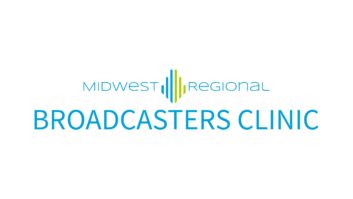A large portion of presentations at the National Association of Shortwave Broadcasters meeting, held in Washington in May, centered on the issue of how shortwave radio — dismissed by some as in its last throes, a relic of the Cold War era disappearing under the shadow of digital — can eke out a place in the 21st century.

Voice of America’s Chief White House Correspondent Dan Robinson, shares how his interest in shortwave radio led him to a prestigious career as an international broadcast journalist. As many of the conference’s speakers argued, that solution for now may reside in areas with little electricity, where shortwave is seen as an effective and necessary means of relaying information under the nose of repressive regimes.
Presenting the results of a recent study on shortwave audiences across the globe, Dr. Kim Andrew Elliott, an audience research specialist at International Broadcasting Bureau, pointed out that in countries like Nigeria and Zimbabwe, radio ownership far surpassed television.
In the impoverished landscape of Mugabe’s Zimbabwe, 32 percent of those surveyed own shortwave radios, according to Elliott. The surveys were conducted randomly, face-to-face and door-to-door.
Burma, another stronghold for shortwave, with a 60 percent listenership, is ranked by the Reporters without Borders website as 169 out of 179 for freedom of the press, slightly up from its 2010 spot (174).
“People are listening to radio at work. They may not have a radio at home but they’re listening where they can,” said Elliott. People are “very comfortable about owning shortwave radios and tuning them.”
The attendees of the conference, all representing various interests in the shortwave world, hailing from across the country, got a tour of Radio Free Asia, the conference’s host location, which has managed to broadcast even to the highly censored North Korea via shortwave, which is more difficult to interrupt than the Internet and is one of the only means of bringing in news from the international community.
Presenter Thomas Witherspoon, who founded Ears to Our World, a nonprofit based near Asheville, N.C., which supplies shortwave radios to South Sudan, said, “I get asked all the time, ‘Why do you still use shortwave radio? That’s like something my grandpa had.’ People know by and large that it’s on the decline … We’re working in the places where it’s not on the decline as much.”
He said he was skeptical when people dismiss shortwave radio’s future on premises like “the Internet is everywhere.”

Presenter Kim Andrew Elliott and NASWB Secretary Jeff White take a short break between sessions. “I always like to think there’s an opportunity in this,” Witherspoon said. “We can look at all these reasons why (radio) is on the decline, or instead ways we can invest in shortwave radio and why we should do that. First of all, it’s affordable, and you broadcasters are doing it pretty efficiently.”
One of the conference’s few women attendees, Shahnaz Ghavami, of the FCC, said, “After sitting here today, it’s fascinating. It makes you think about shortwave as something new.”
The group also heard presentations by the USA DRM (Digital Radio Mondiale) group and from one of NASB’s newest members, Antenna Products of Mineral Wells, Texas.
In the business portion of the meeting, NASB Vice President Brady Murray, President Glen Tapley and Secretary-Treasurer Jeff White were all re-elected.
“Of course those of us who are involved in shortwave radio know that it’s very much alive and kicking. It’s our job to make sure that the big bosses who fund shortwave stations know this too, so they don’t keep eliminating funding for these operations,” White wrote in an email after the conference.
“And along with this, we need to find new, innovative ways to make shortwave relevant in today’s media-saturated world. So it’s important for us to get together – if only once a year – and share ideas with each other.”
Next year’s NASB annual meeting will be held in Birmingham, Ala., May 16 and 17, 2013.







